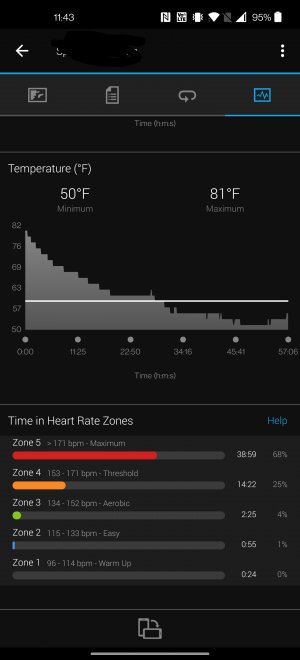- Joined
- Sep 12, 2012
- Messages
- 12,499
I was somewhat surprised that there was not already a thread on this topic.
As a rule, how do we feel about the HR training zones and the currently generally accepted calculations?
220-age = Max HR.
Max HR x 70% = Optimum Fat Burn
Max HR x 85% = Optimum Cardio
As I get more comfortable on the Peloton I find myself easily getting up to the 85% range. Am I really just turning into a 'fit fat guy' and am I better to adjust the resistance of the bike to keep me in that 70% zone so that I am burning the right calories to lose weight?
As a rule, how do we feel about the HR training zones and the currently generally accepted calculations?
220-age = Max HR.
Max HR x 70% = Optimum Fat Burn
Max HR x 85% = Optimum Cardio
As I get more comfortable on the Peloton I find myself easily getting up to the 85% range. Am I really just turning into a 'fit fat guy' and am I better to adjust the resistance of the bike to keep me in that 70% zone so that I am burning the right calories to lose weight?


